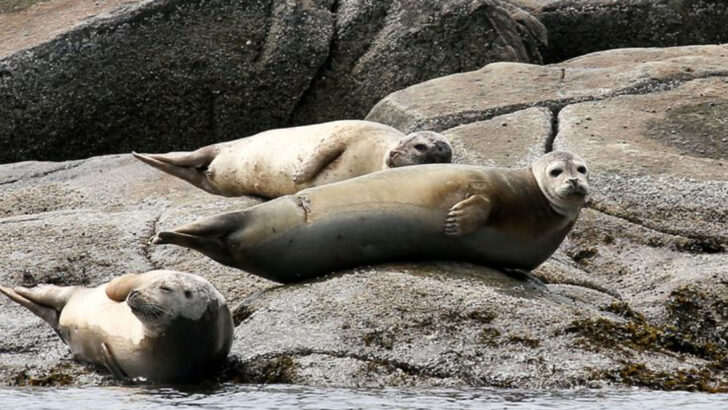The waters off Maine’s coast aren’t as calm as they look.
Beneath the fog, tides, and crashing waves, an entire army of sea creatures is on the move—hunting, hiding, and ruling the shoreline with tooth, claw, and sting.
Some are armored. Some are slippery. A few are downright alien. From lurking lobsters with claws like bear traps to seals with watchful eyes, this lineup is anything but boring.
And yes—there are sharks.
If you think Maine’s shores are just lighthouses and seaweed, think again. These 16 sea creatures are the real locals, and they’re not just passing through.
Atlantic Puffin
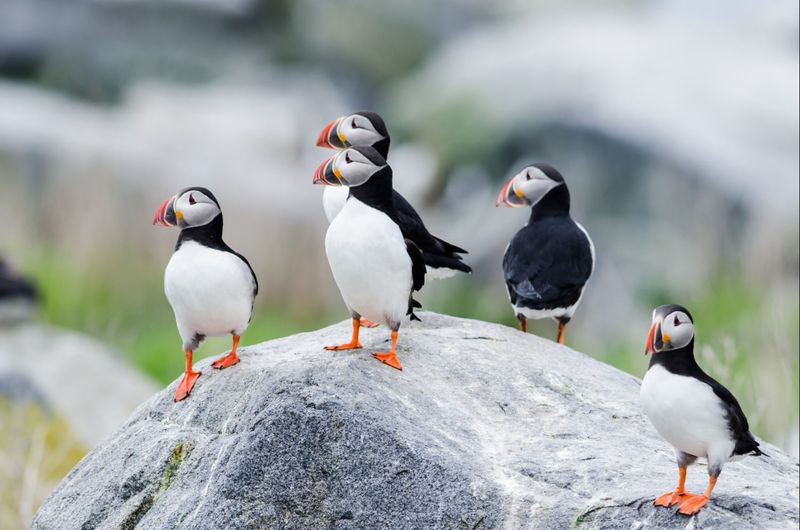
The Atlantic Puffin, often dubbed the “clown of the sea,” captivates with its vibrant beak and charming antics. Nesting on Maine’s rocky cliffs, these seabirds are a delight to observe. Puffins spend most of their lives at sea, returning to land only to breed. During the breeding season, their beaks become a bright rainbow of colors, a spectacle that attracts many visitors. Despite their clownish appearance, they are agile underwater hunters, diving to catch fish. Conservation efforts have helped maintain their numbers, making these birds a symbol of hope for wildlife enthusiasts.
Harbor Seal
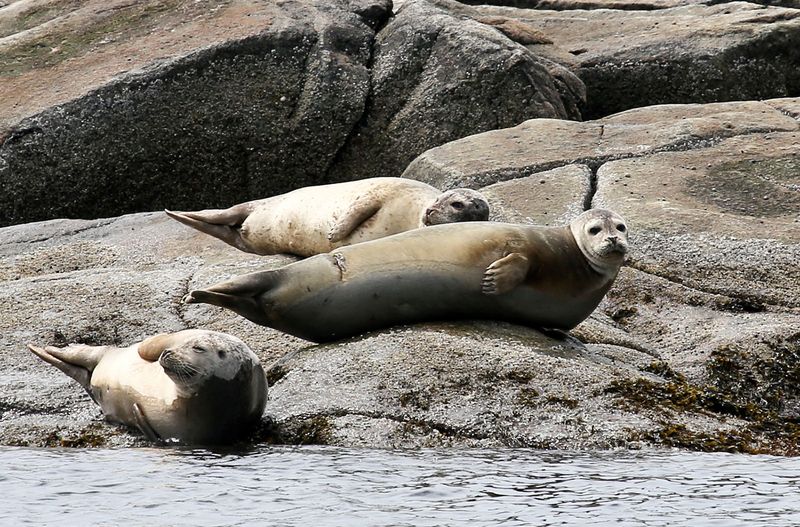
With a curious face and a tendency to lounge on rocky shores, the Harbor Seal is a familiar sight along Maine’s coast. These seals are social animals, often seen in groups, basking in the sun or playfully swimming in the surf. Their adaptability is remarkable, thriving in both the open ocean and sheltered bays. Mothers are attentive, and pups are born ready to swim. However, their natural curiosity sometimes leads them into trouble, especially near human activities. Observing these seals reminds us of the importance of protecting marine habitats for future generations.
Lobster
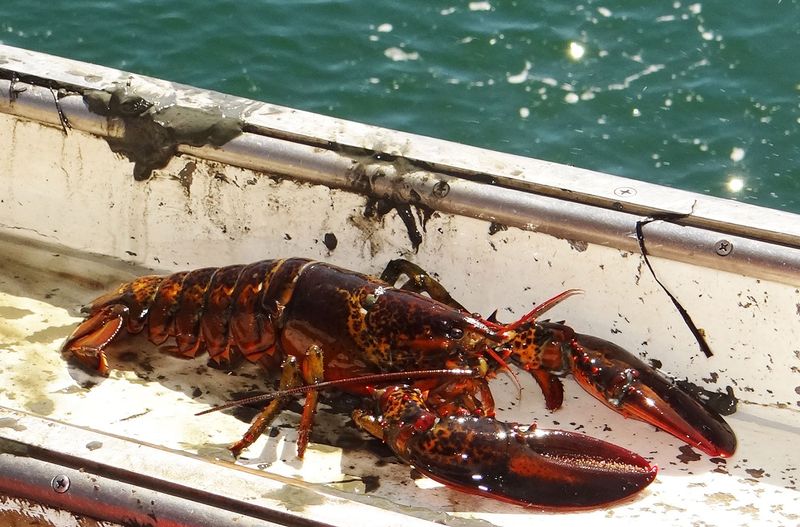
Maine’s iconic lobster is more than just a delicacy; it’s a fascinating creature with a complex life. Known for its large claws, the lobster is a master of camouflage, blending into its rocky environment. Lobsters grow by molting, shedding their exoskeletons several times throughout their lives. Their nocturnal habits and keen sense of smell make them effective scavengers of the ocean floor. Lobstering is a vital part of Maine’s economy, with strict regulations in place to ensure sustainable harvesting. Whether on your plate or in the wild, the lobster is a true symbol of Maine’s coastal culture.
North Atlantic Right Whale
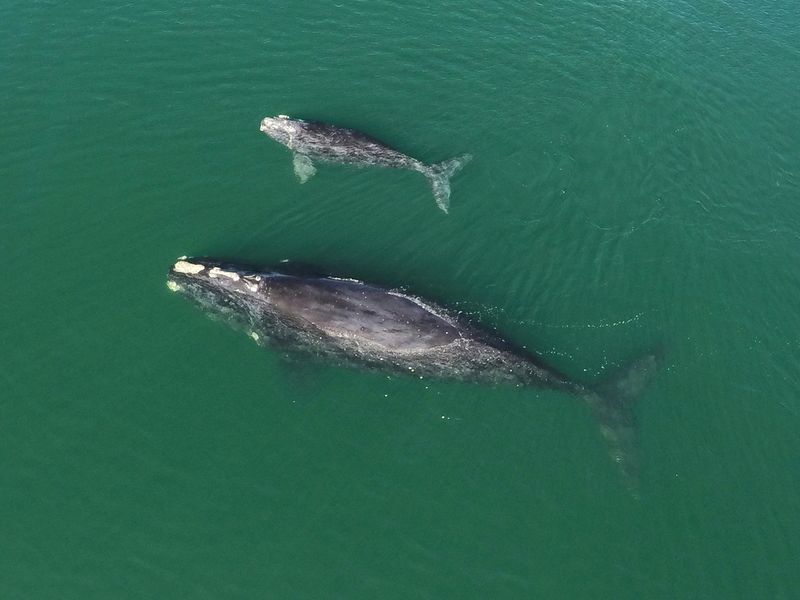
The majestic North Atlantic Right Whale is one of the rarest marine mammals in the world. With only a few hundred individuals remaining, this species faces several threats, including ship strikes and entanglement in fishing gear. The waters off the coast of Maine serve as crucial feeding grounds during the summer months. These whales are known for their distinctive callosities, which make individual identification possible. Conservation efforts are ongoing to protect these gentle giants, emphasizing the importance of preserving their habitat. Seeing one in the wild is a profound experience, inspiring many to join conservation efforts.
Atlantic Cod
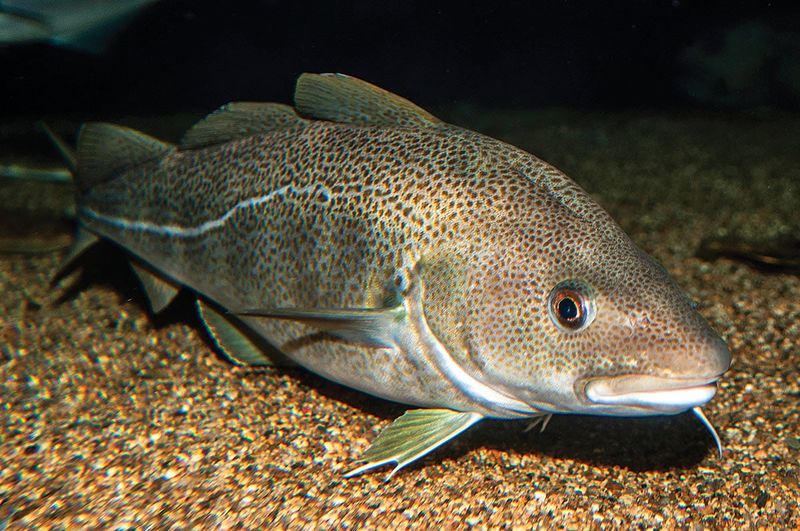
The Atlantic Cod has long been a staple of the New England fishing industry. This fish is recognized for its speckled skin and distinctive barbel under the chin. Cod are versatile predators, feeding on a variety of smaller fish and invertebrates. Unfortunately, overfishing has led to a significant decline in their numbers. Maine’s waters are part of the rebuilding efforts through sustainable fishing practices and regulations. Cod fishing is not just an economic activity but a cultural tradition, making the conservation of this species a priority for both environmentalists and local communities alike.
Bluefin Tuna
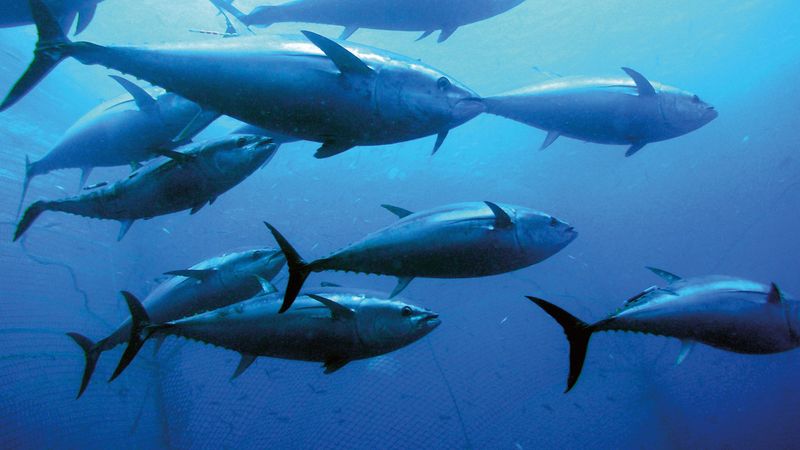
The Bluefin Tuna is a marvel of the ocean, prized for its speed and strength. Known as one of the fastest fish, it can reach speeds of up to 43 miles per hour. These migratory giants pass through Maine’s waters, attracting both commercial and recreational fishers. Bluefin Tuna are apex predators, feeding on smaller fish and squid. However, their populations have been threatened by overfishing due to high demand. Conservation efforts are underway to manage tuna fisheries sustainably. Witnessing a Bluefin in action is exhilarating, a reminder of the ocean’s incredible vitality and diversity.
Common Eider
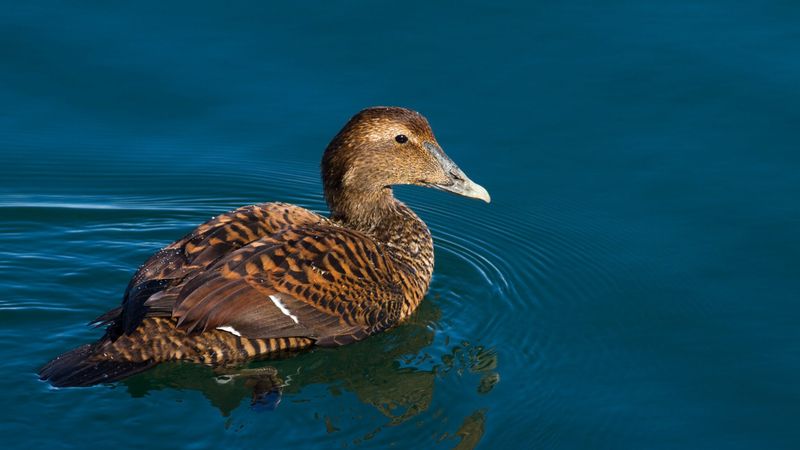
The Common Eider, with its elegant plumage, is a familiar sight along Maine’s rugged coastlines. These ducks are the largest in the northern hemisphere and are known for their distinctive black and white feathers. They feed on mollusks and crustaceans, skillfully diving to reach their prey. Eiders are social birds, often forming large flocks during the non-breeding season. Their down feathers are highly prized for insulation, leading to historical hunting pressures. Today, conservation efforts focus on habitat protection, ensuring these striking birds continue to grace Maine’s shores with their presence.
Minke Whale
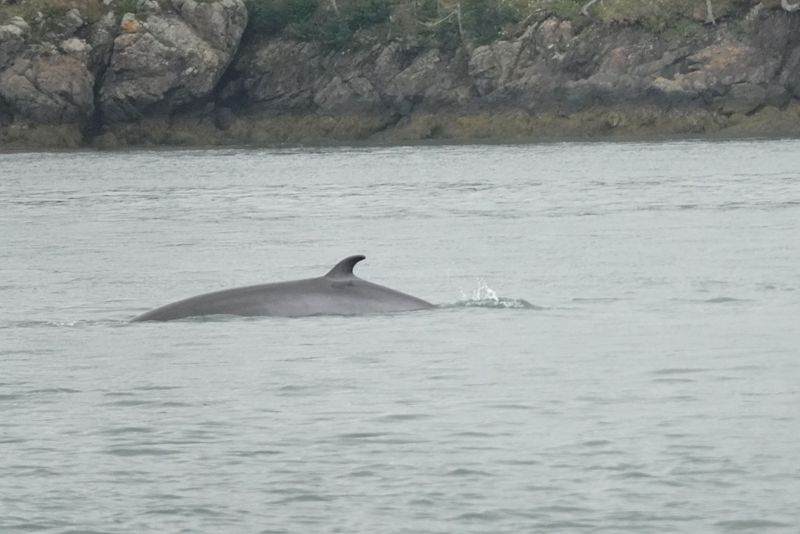
The Minke Whale, the smallest of the baleen whales, is a frequent visitor to Maine’s coastal waters. Known for their playful nature, these whales often approach boats, offering whale watchers a breathtaking experience. Minke Whales have a unique feeding technique, using their baleen plates to filter small fish and krill. Despite being hunted in some parts of the world, Minke Whales are relatively numerous, thanks to international conservation efforts. Their presence is a reminder of the rich marine biodiversity supported by Maine’s oceanic environment, inviting awe and admiration from those lucky enough to spot them.
Green Sea Urchin
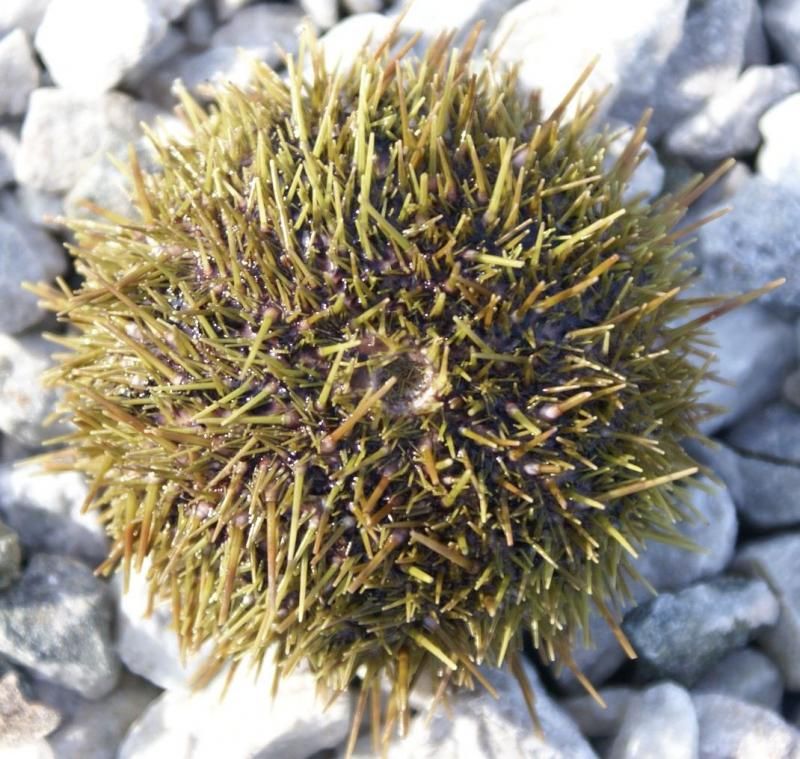
The Green Sea Urchin, with its spiny exterior, is a small but vital part of Maine’s marine ecosystem. These creatures graze on algae, helping to maintain the balance of the underwater environment. Despite their unassuming appearance, sea urchins have a unique way of moving using tiny tube feet. They are also a delicacy, harvested for their roe, known as uni. Overharvesting has led to population declines, prompting efforts to manage sea urchin fisheries sustainably. Observing these creatures in their natural habitat reveals the intricate connections within the ocean’s food web.
Atlantic Horseshoe Crab
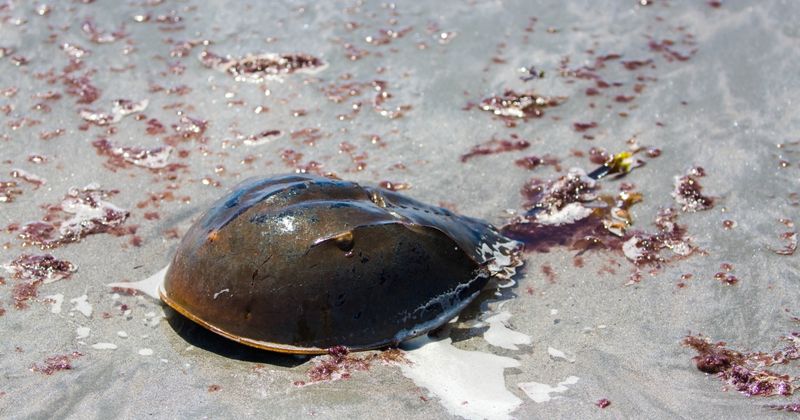
The Atlantic Horseshoe Crab, often called a living fossil, has roamed the earth for over 450 million years. With its distinctive hard shell and long tail, it is a curious sight on Maine’s beaches. Horseshoe crabs play a crucial role in the ecosystem, providing food for migratory birds and supporting biomedical research with their blue blood. Despite their ancient lineage, they face modern threats from habitat loss and overharvesting. Preservation efforts are crucial to maintaining their populations. Encountering a horseshoe crab offers a glimpse into the ancient past, a marvel of evolution and survival.
Northern Sea Star
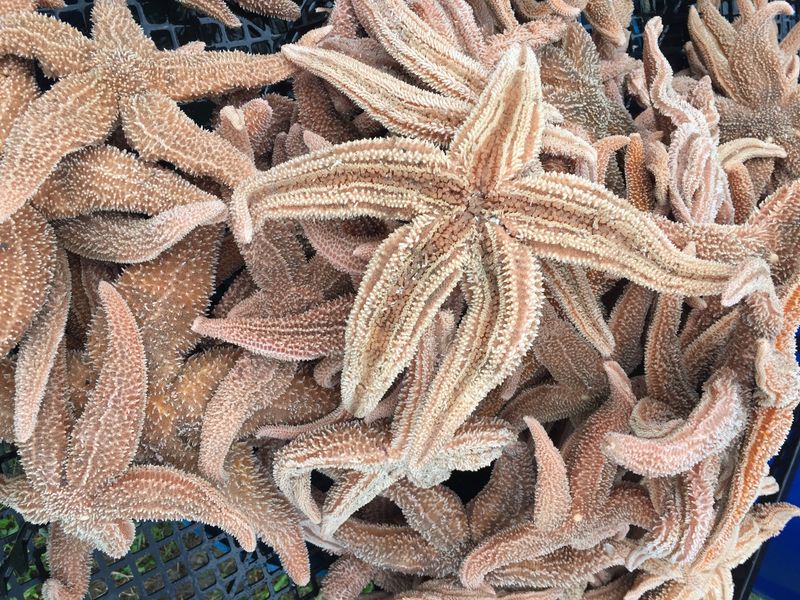
The Northern Sea Star, often found clinging to rocks in Maine’s tidal pools, is known for its vibrant colors and resilience. Sea stars play a critical role in the marine ecosystem, preying on mollusks and helping to control their populations. These fascinating creatures can regenerate lost arms, showcasing nature’s remarkable adaptability. Though they appear slow, sea stars are efficient predators, using their tube feet to pry open shells. Climate change poses a threat to their habitats, making conservation efforts vital. Their presence is a testament to the ocean’s intricate balance and the wonders of marine life.
Striped Bass
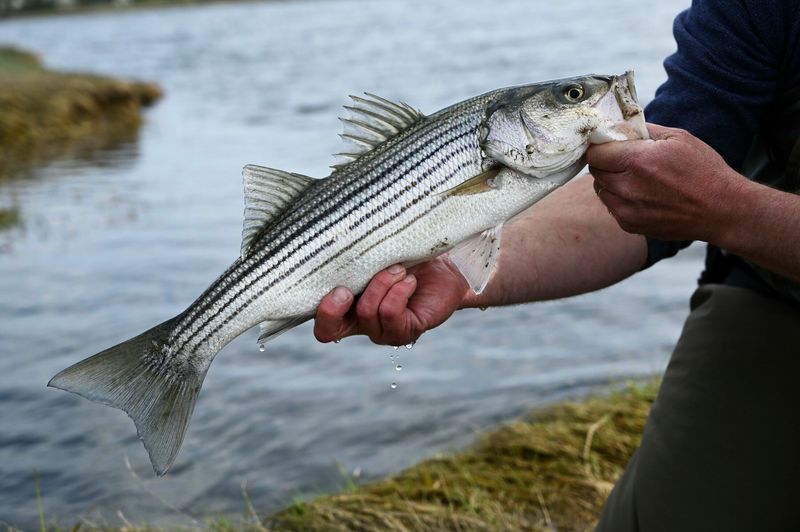
The Striped Bass is a beloved fish among anglers, known for its powerful fight and delicious taste. These sleek fish migrate along the Atlantic coast, with Maine’s waters providing a crucial stop during the summer months. Striped Bass have a distinctive pattern of horizontal stripes, making them easily recognizable. Overfishing once threatened their populations, but successful management has led to their recovery. The thrill of catching a Striped Bass is a highlight for many fishermen, reflecting a deep connection to the ocean and the rich fishing heritage of the region.
Moon Jellyfish
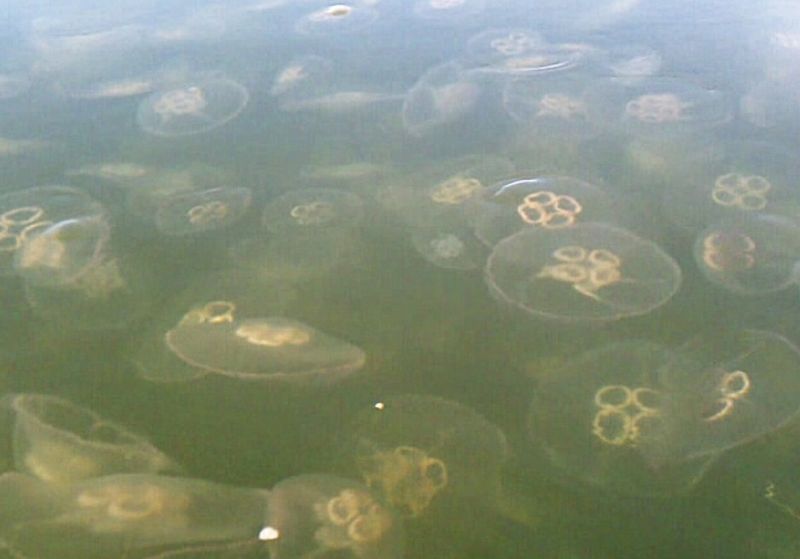
The Moon Jellyfish, with its mesmerizing, translucent bell, drifts gracefully through Maine’s coastal waters. These ethereal creatures are often seen in large groups, known as blooms, during the warmer months. Moon Jellyfish feed on small plankton, capturing them with their delicate tentacles. Though they possess a mild sting, they are harmless to humans, adding a touch of mystery to the ocean landscape. Their presence is an indicator of environmental changes, as they thrive in nutrient-rich waters. Observing a bloom of Moon Jellyfish is a captivating experience, offering a glimpse into the ocean’s ever-changing dynamics.
American Lobster

The American Lobster is an emblem of Maine, celebrated for both its culinary appeal and ecological significance. With its imposing claws and dark shell, it is a master of the ocean floor. Lobsters are nocturnal creatures, using their keen senses to forage for food at night. The process of molting and regrowing their shells is a testament to their resilience. Lobstering is deeply woven into Maine’s cultural fabric, with sustainable practices ensuring this tradition continues. Spotting one in the wild is a reminder of the ocean’s bounty and the delicate balance of marine ecosystems.
Atlantic Mackerel
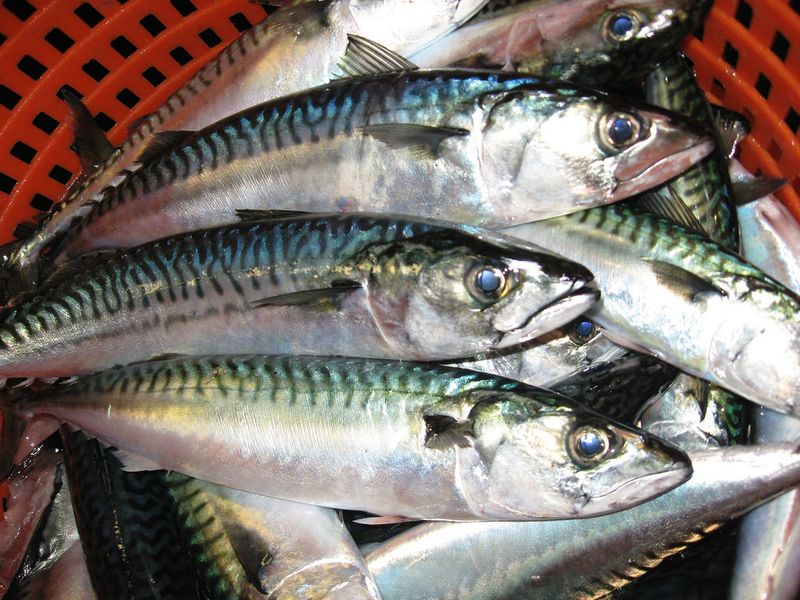
Atlantic Mackerel are known for their shimmering, iridescent scales and swift movements. These fish travel in large schools, making them a common sight in Maine’s waters during migration. Mackerel are agile hunters, feeding on small fish and plankton. They play a significant role in the food chain, supporting both marine predators and human fisheries. Overfishing has been a concern in the past, but sustainable practices have helped maintain their populations. The sight of a school of mackerel is a dynamic display of nature’s beauty and the complex interactions within ocean ecosystems.
Sand Dollar
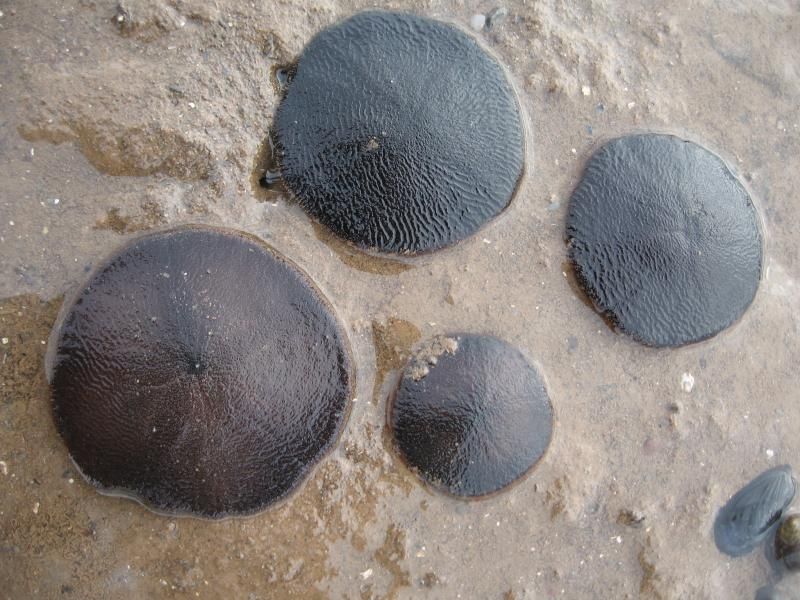
The Sand Dollar, with its intricate patterns and star-shaped markings, is a fascinating inhabitant of Maine’s sandy shores. Despite their delicate appearance, these creatures are well-adapted to life in the shifting sands. Sand Dollars feed on tiny particles, using their spines to move food to their mouths. Their skeletons, often found washed up on beaches, are popular souvenirs, but they serve an important role in the marine ecosystem. Observing a live Sand Dollar is a reminder of the ocean’s hidden wonders and the delicate balance that sustains life beneath the waves.

